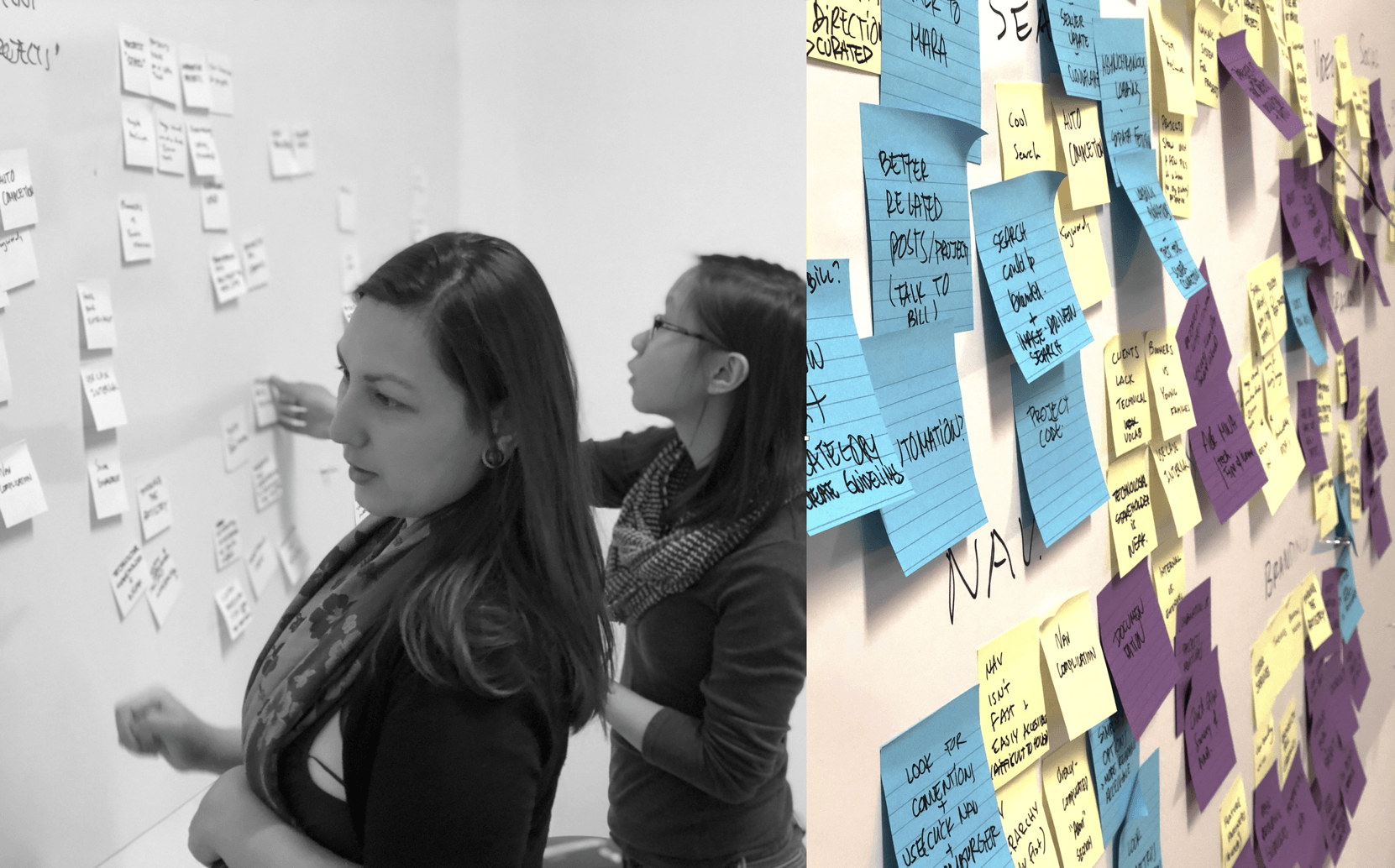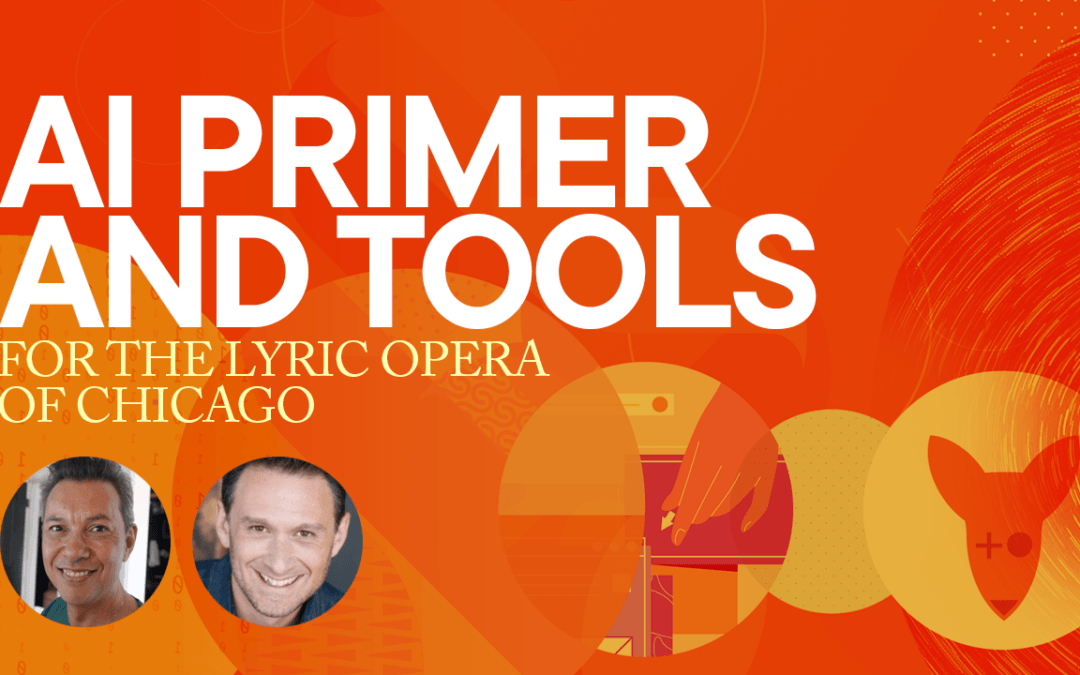
We tried a new approach to brainstorming. Here’s what happened.
At Pax, we recently tried a more collaborative approach to brainstorming our proposed deliverables for a client. Why?
We’d noticed that our previous work as a team was more multidisciplinary than it was interdisciplinary. Since we have both designers and developers on staff, we have different areas of expertise represented, but with the way our projects would progress from one person to the next, there hadn’t been as much all-staff collaboration as there could be. (We’ve also realized that putting members of a team together in the same room is not always a guarantee that ideas will cross-pollinate.)
So we decided to implement a different method by involving everyone in the Discovery brainstorm phase for the project definition.
We had been approached by a client, asking for our recommendations on how they could strengthen their branding and website design, and we were meeting with them in a few weeks to present our ideas.
We’d done our research, including conducting in-depth stakeholder interviews and exploring every angle of their online presence, as well as their competitors. Then we all came together to discuss our ideas.
The results we discovered were even better than we imagined.
Communication was better, faster and strategic.
Previously, the flow of communication within our team had taken a more linear and rigid process, with information passing from the client to our principal, our principal to our designer, and later our principal to our web developers. This partitioning helped protect our team members from the fluidity of projects with multiple revisions. This process insured stable specs to make their way through our work pipeline. But it also made the end of our pipeline more detached from the original vision and strategy of the project.
Bringing everyone onboard right at the beginning had some noticeable benefits.
While we were discussing potential website improvements, we were able to immediately project with our development team how feasible it would be to make those changes, rather than having to parse out this information later in the process. Thus we developed a clearer, more comprehensive plan of what we could accomplish, right from the start of the project with all the members involved.
We also avoided the waterfall effect of having deliverables cascade from one member of our team to another—while appropriate for some projects, this approach occasionally caused delays and unneeded iterations in the past, as aspects of the original project vision would get lost in translation due to longer reviewing processes and a more rigid approach. In contrast, our all-hands-on-deck approach ensured that the vision was clear to everyone from the beginning.
To prepare for this initial session, our team members had to read and listen to previous interviews with the client, so they could hear directly from the “mouth of the horse” how clients articulate their business objectives. This step better underscored our reasons for doing the project and showcased how one member can impact the process. It also created an active framework of impacting the end product versus being reactionary to what could be perceived as subjective decisions.

Above: Our team ideating and then synthesizing with Post-Its – we typically cover our white board and walls by the end of a session! Using physical space to limit input is also a good way to create time limits for such workshops.
We devised more integrated solutions.
Thanks to the variety of perspective and disciplines in the room, we engaged in more in-depth explorations of what the client’s site currently was and what it could be.
As part of the session, we each grabbed some Post-Its and wrote down the specific business, branding and digital elements of the project that could be further evolved.
As we put these notes up on the wall, it was clear that while some of our suggestions overlapped, each of us had different ideas on how to strengthen the client’s agenda—whether it was ensuring that the brand remained consistent across digital channels or noting the need for a search capability to improve navigation.
Particularly interesting were the interdisciplinary comments that emerged, e.g. designers commenting on technology or social media, developers engaging in content and marketing discussions (yes, we have these crossover types at Studio Pax!). All comments fostered fruitful discussions and helped us conceptualize more thoughtful deliverables for critical areas of the project.

Above: While brainstorming branding concepts for Civitas with the whole Ensemble, we made sure to give our minds a rest and sometimes, that includes a snack break or a ball of whacks to unlock these cognitive creative processes!
We were better positioned to keep the project on track.
After our brainstorming session ended, our findings were summarized into a spreadsheet of potential deliverables, grouped by category. Then we ranked each deliverable in terms of its complexity and its relevance to the scope of our project to establish a prioritization and features list for the final project. We followed up with a project planning session, where we created a PERT diagram about how we would approach the production planning of the website.
These creative and operational pillars have since become living documents and KPIs of the project that we reference and update as we progress. They have become a key standard for keeping the team accountable and making sure that our final results and deliverables are aligned with our original goals and our clients’.
Overall, we’ve found that this from-the-start interdisciplinary collaboration is an excellent tool to support an interdisciplinary design thinking framework.
Involving everyone on our team improved the rate and flow of communication, helped us develop more nuanced solutions to propose to the client and provided us with a useful tool for keeping the project on track.
We would encourage other businesses to consider adopting this brainstorming approach by bringing in partners or team members who typically aren’t involved in the ideation stages.
You may find, as we did, that there’s immense value in being more than just a multidisciplinary team.

Angela Suico
Writer / Content Strategist

AI Tools Marketing and Processes Webinar
At Studio Pax, we continually explore how to integrate cutting-edge technologies with creativity to enhance branding and marketing strategies. Today, we’re excited to share insights from a recent webinar where our founder, Stephan Tran, discussed our collaborative...
